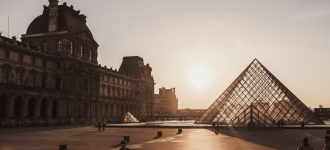On April 15, 2019, a massive fire broke out in Notre Dame de Paris, the most iconic church in the French capital and arguably the most famous Catholic church on the planet. Hundreds of thousands of people tuned in to watch with horror as flames engulfed the Gothic structure. The good news, though, is that the church was saved and has been restored.
There are nearly 200 other churches in the city of Paris. Some of them are specific to a demographic of parishioners: there are churches for the city’s Polish speaking population, for example, as well as for Portuguese and Spanish speakers. There are new churches and mostly there are centuries-old places of worship that are designed to stop you in your tracks, created to induce awe. Many of these churches have their own opening hours, dress codes, and accessibility considerations, so it’s smart to check in advance.
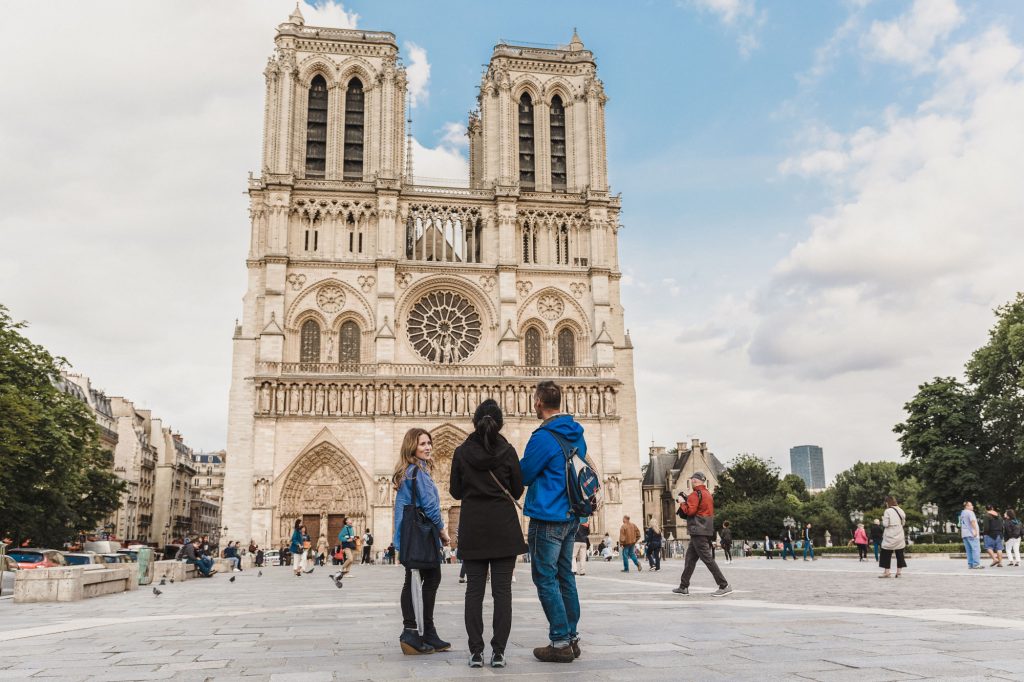
These are the most iconic churches in Paris you need to visit!
You could, in fact, spend weeks in Paris by going on a church crawl, spending time gazing at the facade and then hours inside gawking at the stained glass windows, the dramatic paintings, and the larger-than-life sculptures. You could also take a guided tour of Notre Dame and Sainte Chapelle to get a real insider’s view of some of the City of Light’s most famous places of worship. If you plan to take photos, be aware that each church may have its own photography policy, so always look for posted signs or check online beforehand.
In the meantime, here is a list to get you revved up about the most famous churches in Paris.
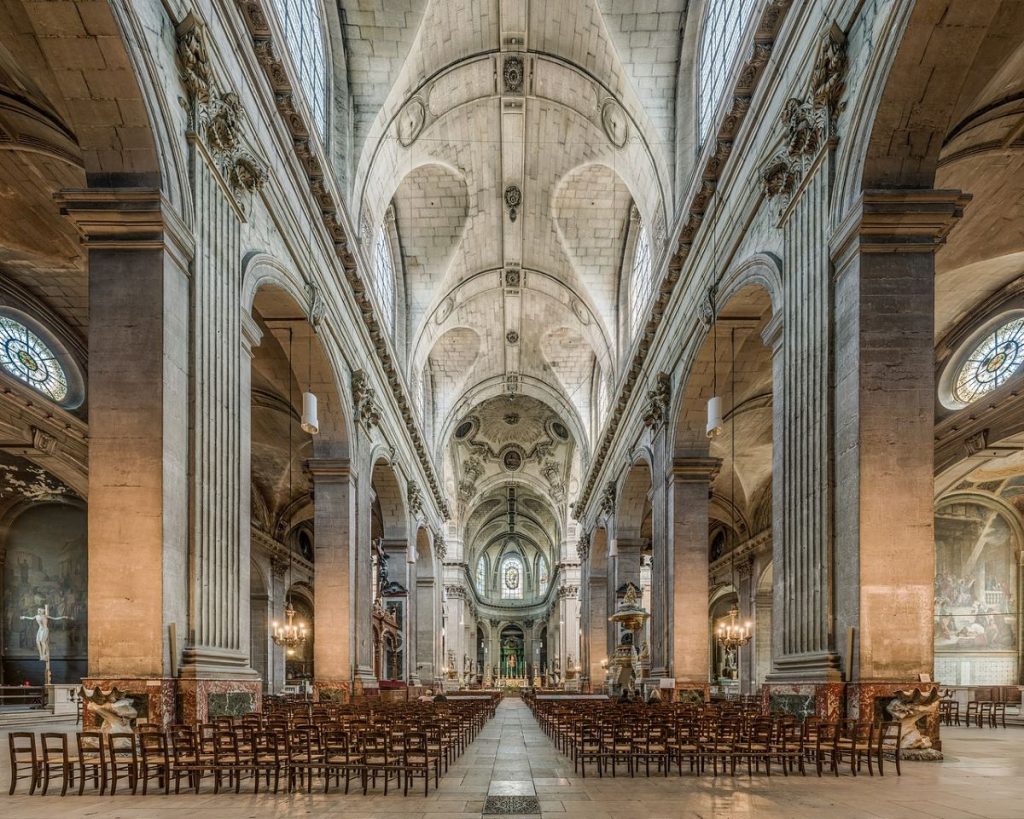
Notre Dame
When people think of Paris, they often imagine Notre Dame after the Eiffel Tower and maybe the Arc de Triomphe. After a devastating fire in 2019, the city’s only official cathedral stands restored and ready to shine once again.
Notre Dame sits on the Ile de la Cité, an island in the middle of the Seine River. Builders constructed the Gothic cathedral in the 12th and 13th centuries. Today, the cathedral stands on a site where a pre-Christian pagan temple of Jupiter once existed.
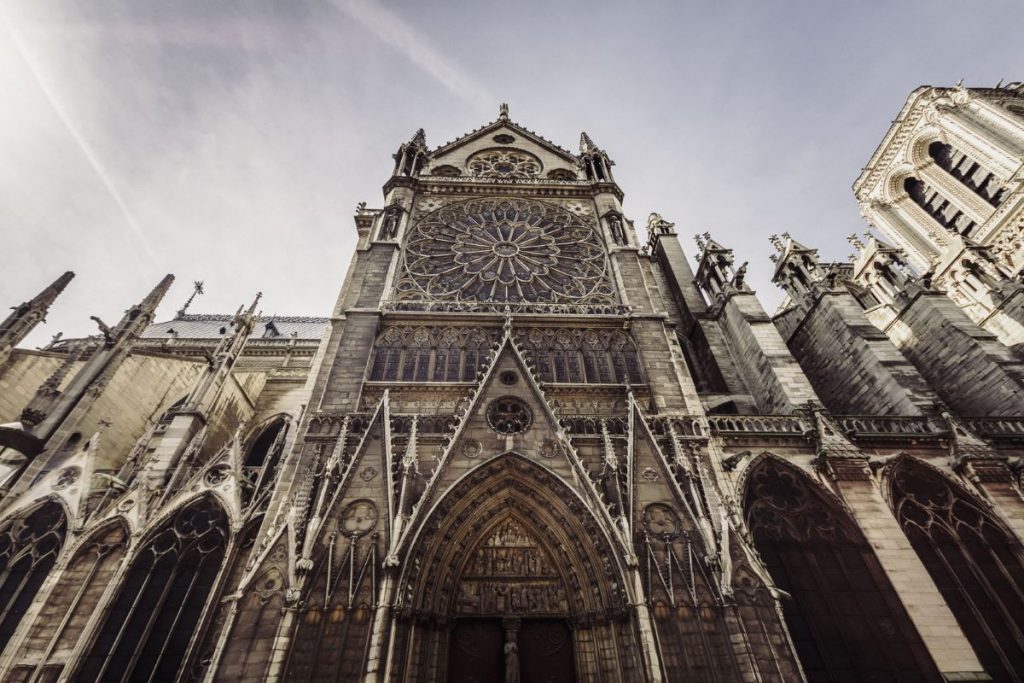
The Notre Dame is one of the top landmarks in Paris which has thankfully been restored.
Online reservation for Notre Dame
To visit the recently reopened Notre-Dame Cathedral in Paris, you should make a free reservation. Access the official Notre-Dame de Paris reservation portal or download the “Cathédrale Notre-Dame de Paris” mobile app, available on iOS and Android.
Through these platforms, you can select a preferred time slot for your visit. Reservations appear regularly, so check frequently for available slots.
While reservations are not mandatory, they are strongly recommended. Doing so helps you avoid long queues, especially during peak hours.
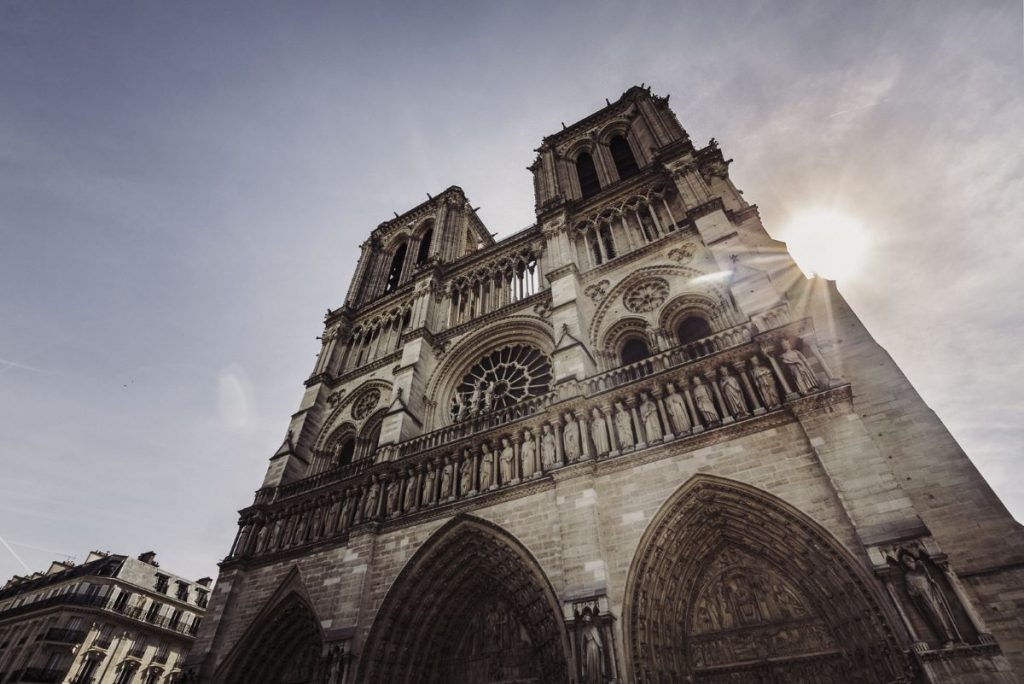
Construction on Paris’s Notre Dame began in 1163 and took almost 200 years to complete.
Sainte-Chapelle
Sainte-Chapelle, located on the same island as Notre Dame, ranks as the second most famous church in Paris. The 13th-century Gothic church stands out for its tall stained glass windows. These windows beam colored light into the interior and mesmerize every visitor.
As with most churches in Paris, check opening hours and ticket prices in advance. This is especially important during holidays or special masses. Sainte-Chapelle enforces a dress code requiring respectful attire. Accessibility options exist but remain limited due to the historic structure. You may take photos (without flash) to help preserve the delicate glass.
During the Hundred Years War in the 14th and 15th centuries, the Holy Foreskin—the only piece of flesh Christ could have conceivably left on Earth—resided at Sainte-Chapelle. Later, caretakers moved it to the town of Coulombs in the south of France, where it remains to this day.
- Sainte-Chapelle essentials:
- Paid admission required
- Dress respectfully
- Limited accessibility
- Photography allowed (no flash)
- Famous for stunning stained glass
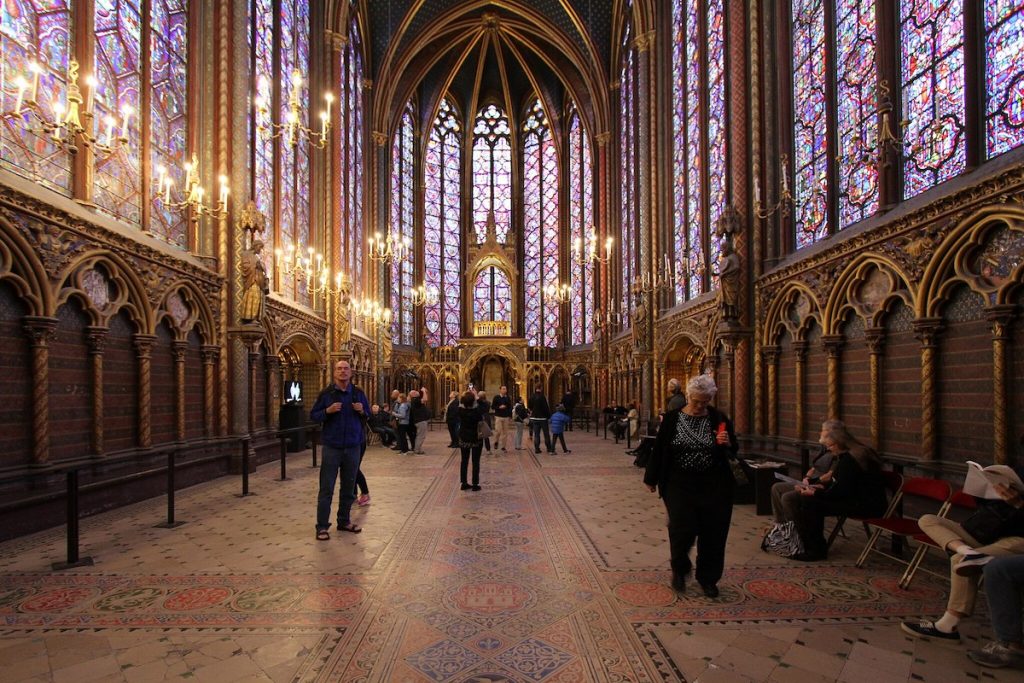
Gothic’s famous pointed arches are everywhere in Sainte-Chapelle. Photo credit: Gerd Eichmann
Sacre Coeur
Sacre Coeur sits atop Montmartre and ranks among the most iconic churches in Paris. Builders completed this church in 1919, making it one of the newer churches in Paris. The site once housed a church destroyed during the French Revolution.
Many people climb up the hill to the church for the panoramic view. However, step inside to marvel at the gold leaf interior. Like most famous Paris churches, Sacre Coeur has opening hours that allow for both early morning and evening visits. Entry is generally free, but there may be ticket prices for the dome or crypt. The dress code is similar—shoulders and knees covered—and photography is permitted without flash. Sacre Coeur is also accessible, with ramps available for visitors with reduced mobility.
If you’re hungry from all that walking, check out some of the amazing restaurants in Montmartre on your way back.
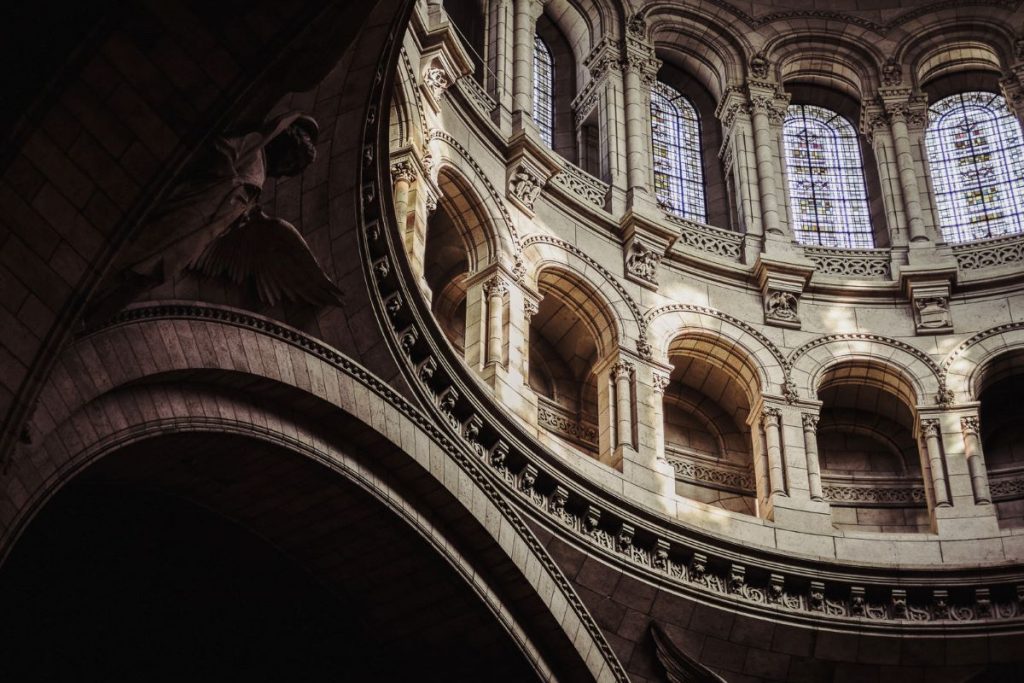
The Basilica of the Sacred Heart of Paris was constructed using travertine stone.
Traveler’s tip: Can’t decide when to plan your trip to Paris? Check out why we think spring in Paris is one of the best times to book your trip.
Saint-Eustache
Saint-Eustache is the second-largest church in Paris. You will find it in the first arrondissement near Les Halles, the central food market in Paris.
Inside, do not miss the 1611 painting “The Disciples of Emmaus” by Peter Paul Rubens. The massive organ with 8,000 pipes is also a highlight. Saint-Eustache welcomes visitors for free during opening hours, but donations are appreciated. You may take photos, but please respect posted signs. The church is accessible for wheelchair users.
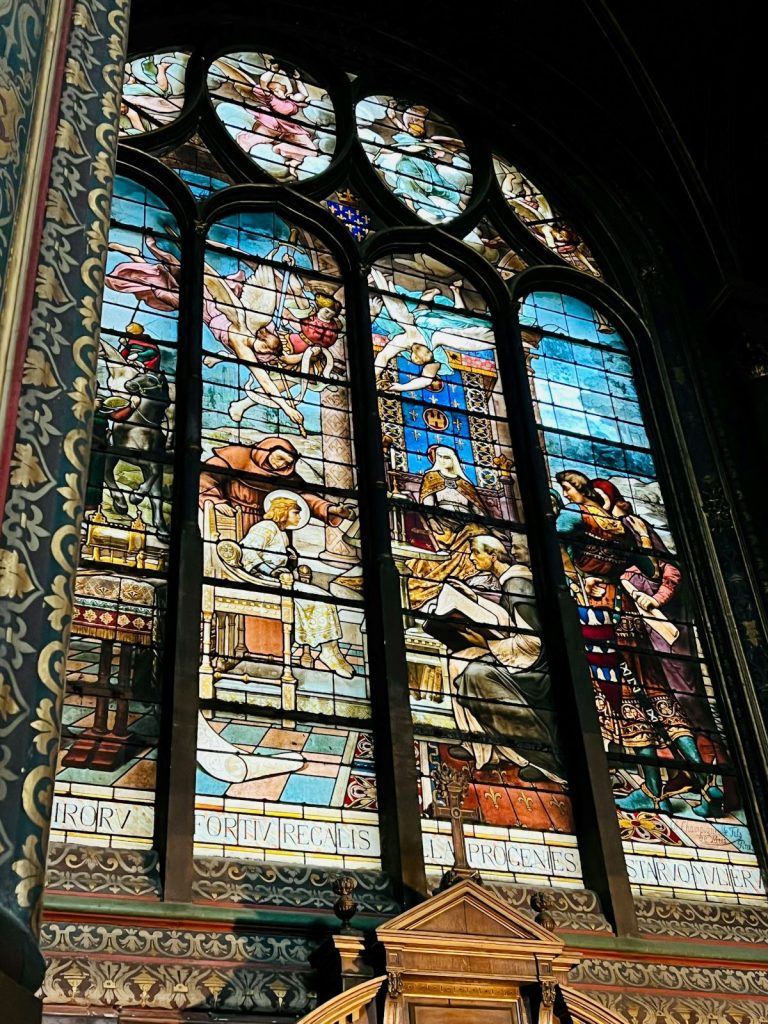
The glass stained artwork at Saint-Eustache is mesmerizing. Photo credit: Stephanie Klepacki
Saint-Denis
You will need to travel to the northern suburbs of Paris to see Saint-Denis. However, this trip is worth it. The basilica serves as the resting place for many of France’s monarchs—32 queens and 43 kings. The first royal burial occurred here in the late 5th century. The last was Louis XVIII in 1825.
Do not miss visiting the crypt. Spend time admiring the stained glass as well. Saint-Denis charges ticket prices for entry and for the crypt. Students and children receive discounts. Opening hours vary by season. The basilica is accessible and has clear guidelines about dress code and photography policy (photos without flash are usually permitted).
- Why visit Saint-Denis?
- Resting place of many French monarchs
- Entry fee applies (discounts for students/children)
- Crypt and stained glass are must-sees
- Accessible for wheelchair users
- Photos allowed (no flash)
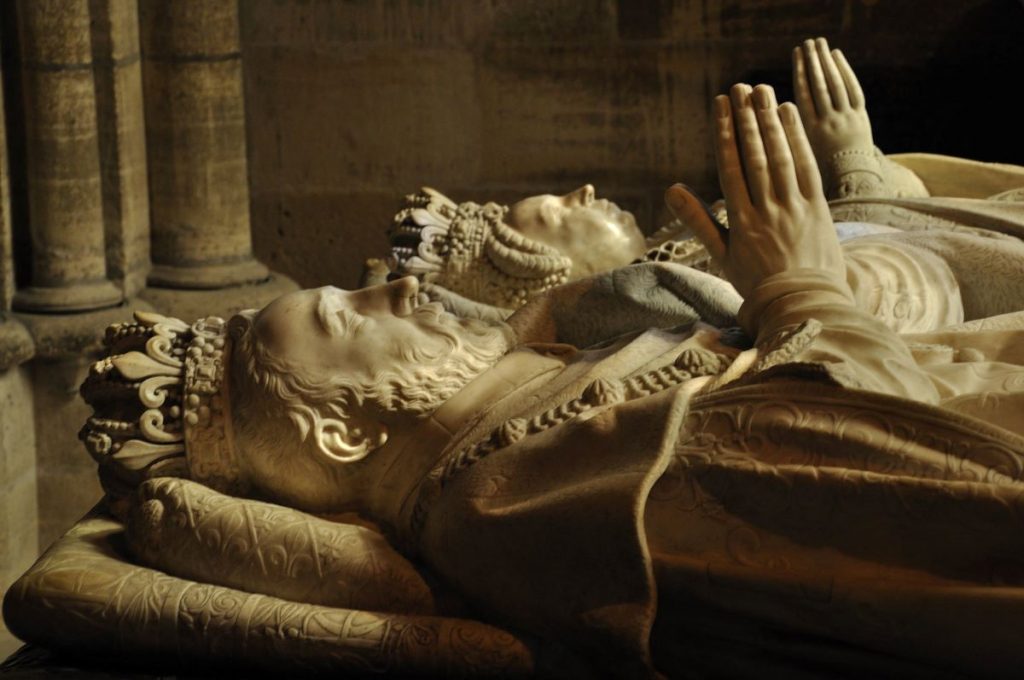
Saint-Denis is one of the famous churches in Paris you don’t want to miss. Photo credit: Dan Belanescu
Saint Germain des Prés
Saint Germain des Prés is the oldest church in Paris. Its foundations date back to the sixth century. The church sits in the Latin Quarter on the Left Bank. The simple Romanesque exterior hides a stunning interior. Inside, you will find a Baroque interior and a blue-ceilinged nave.
Saint Germain des Prés opens daily for visitors and worshippers. The entrance lists the hours. Entry is free, but donations are encouraged. The church is generally accessible. Like most Paris churches, modest attire is preferred. You may take photos, but avoid flash.
In September 1792 during the French Revolution, the church saw much bloodshed. Revolutionaries executed priests who refused to swear an oath of allegiance in the church garden.
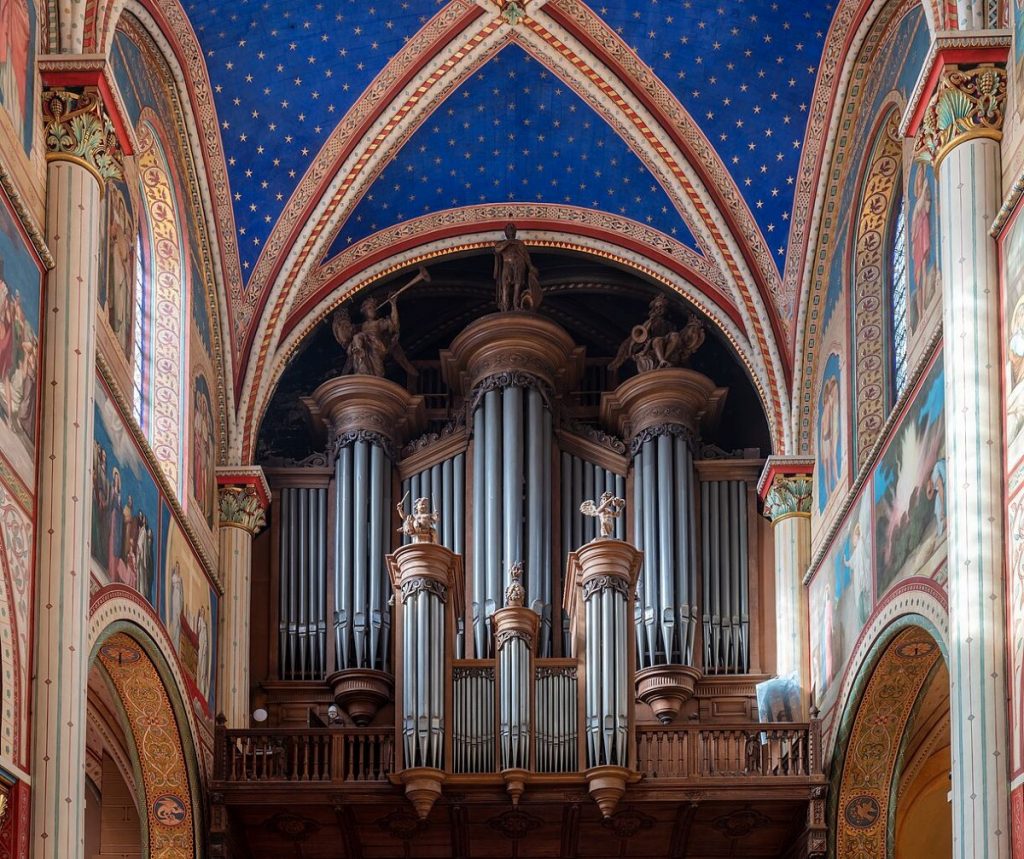
While the exterior may look dull, the interior is anything but. Photo credit: Diego Delso
Saint Étienne du Mont
Saint Étienne du Mont sits on the Left Bank, close to the Pantheon. Builders completed it in the 15th century.
The architecture mixes late Gothic and early Renaissance styles. Inside, you will find a stained glass depiction of the Apocalypse. The church also houses the shrine of St. Genevieve, the patron saint of Paris.
Saint Étienne du Mont opens for visitors during posted hours. Entry is free. You may take photos (no flash). The church is partially accessible because of some steps and uneven flooring.
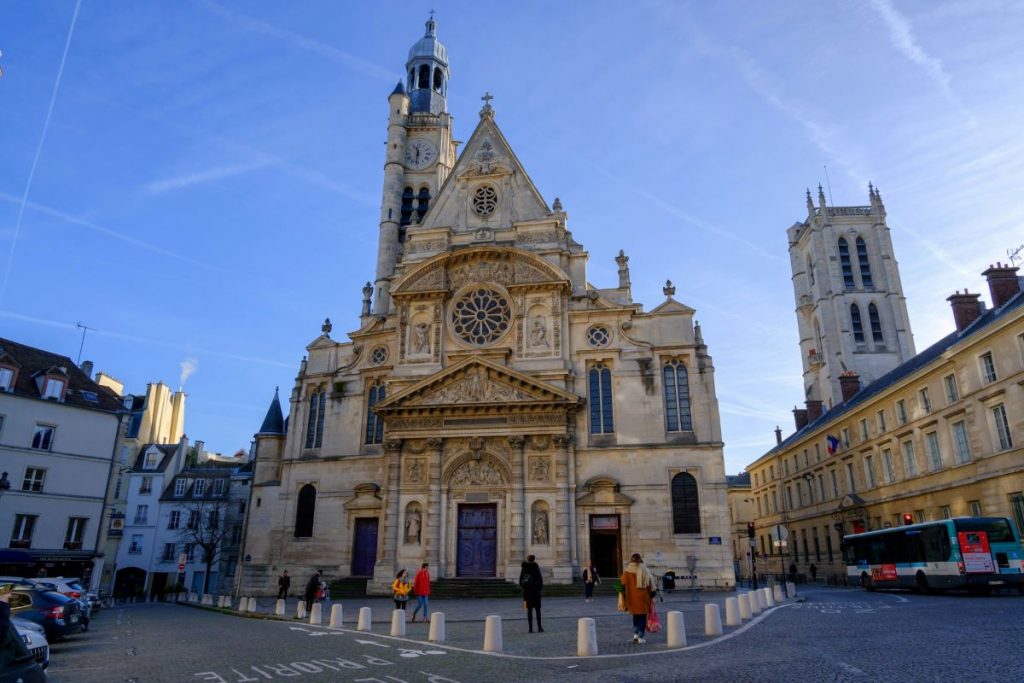
If you love late Gothic and early Renaissance architecture, you will enjoy these famous churches in Paris. Photo credit: Antonio Sessa
Saint-Sulpice
Saint-Sulpice stands in the Latin Quarter in the sixth arrondissement. For years, church lovers visited it for its architecture. In 2003, fans of Dan Brown’s novel “The Da Vinci Code” discovered it. Three years later, the film adaptation starring Tom Hanks brought even more visitors. The story’s plot runs through Saint-Sulpice. Besides this fictional connection, the church shows off 17th-century French architecture.
You may visit during regular opening hours. Entry is free. Photography is allowed (without flash), but always be respectful during services. The church is accessible via ramps. Modest attire is required.

These famous churches in Paris will inspire every art history lover. Photo credit: DXR / Daniel Vorndran
FAQ: Visiting Famous Churches in Paris
What are the opening hours for Paris’s most famous churches?
Opening hours vary by church and season. Most open from early morning until early evening. Always check the church’s official website before your visit.
Do I need to follow a dress code when visiting Paris churches?
Yes, a modest dress code is recommended for all churches. Shoulders and knees must remain covered. Remove hats before entering.
Are there ticket prices for entry to these churches?
Most Paris churches, including Notre Dame and Sacré Coeur, offer free entry. However, you may need tickets for special areas like the crypt, towers, or dome. Sainte-Chapelle and Saint-Denis Basilica usually require paid admission.
Can I take photographs inside the churches?
Photography is generally allowed, but flash is often prohibited. Always look for posted signs or ask staff about the photography policy.
Are the churches accessible for visitors with reduced mobility?
Most major churches in Paris, such as Notre Dame and Sacré Coeur, have improved accessibility. However, some historic buildings offer limited access. For up-to-date details, consult the official church website or contact their visitor services.
Looking for more great Paris recommendations?
If you want to see the best of Paris, join one of our small-group walking tours. Our Paris in a Day Walking Tour lets you enjoy the Eiffel Tower from Trocadero Square, explore the Sacré Coeur Basilica and Montmartre, visit Notre Dame, and much more.



